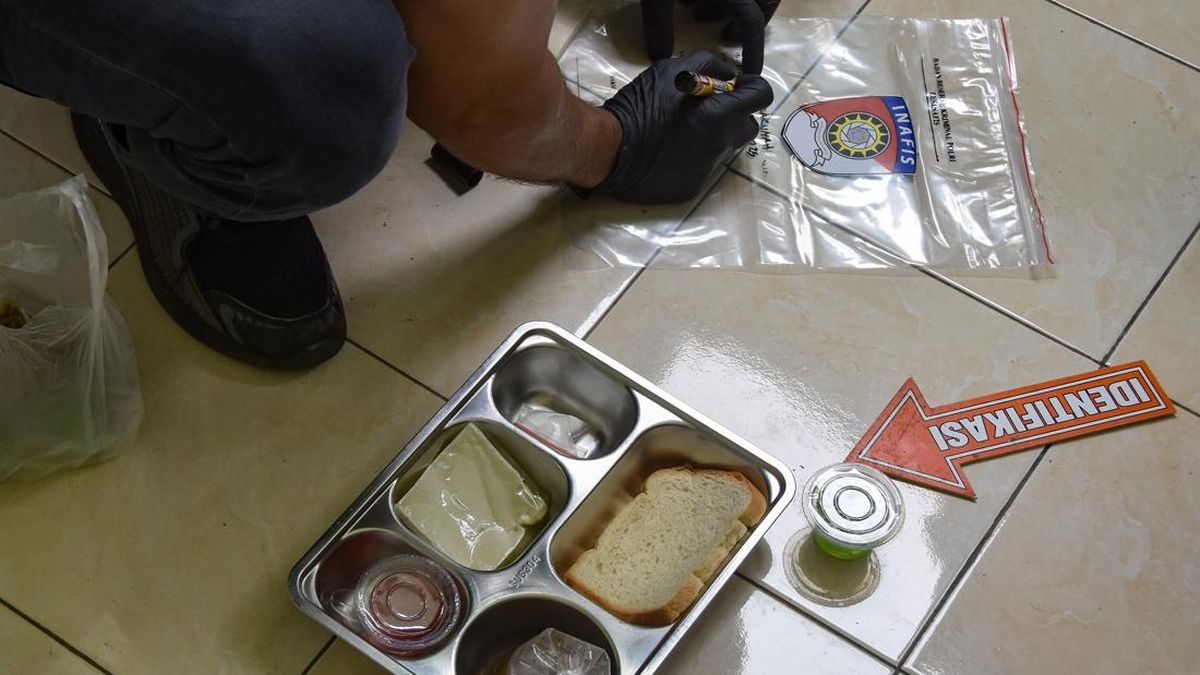Lobster tails, pistachio panettone: Like it or not, Aldi has kicked off the battle for Christmas
How soon before Christmas is it acceptable to start playing Mariah Carey’s All I Want For Christmas Is You? If you ask Aldi, October 1 is fair game.
On Wednesday, the American singer’s seasonal tune pumped through the speakers at a private venue overlooking Sydney’s glittering harbour as the kitchen pumped out canapes, entrees, mains and desserts from Aldi’s soon-to-be-launched Christmas range, dressed up on golden plates – and there was nothing that felt discount about it.

Aldi is taking the fight to Coles and Woolworths over Christmas lunch spending.
Waitstaff handed out platters of bacon-wrapped scallops and served seafood bisque pots before laying out lobster tails, marinated salmon fillets and “turducken” (a deboned chicken stuffed into a deboned duck, stuffed into a deboned turkey) on a long table. Buffet-sized bowls of king prawns and giant roasted ham legs sat largely untouched, as did a full charcuterie spread.
It’s not the only supermarket that has begun flogging festive treats; toffee, date and ginger puddings and gingerbread men are already on display at Coles and Woolworths. Nor is it unusual for retail giants to host events to ring in Christmas (Coles has been wheeling out Curtis Stone for years to this end).
But it’s the first time that Aldi has done so. The feast for media (and another that evening held for influencers) was a telling sign of how the underdog of Australia’s grocery landscape is squaring up against the major players and challenging their incumbency as 2025 closes out.
Any retailer will tell you that Christmas is the most crucial time of the year: department stores collect two-thirds of their annual profits during the silly season.
Loading
By all accounts, Aldi looks set to have its best Christmas ever. Since launching in Australia in 2001, Aldi’s store footprint has expanded to 600. It now commands a growing market share of about 10 per cent. Profit more than doubled to $402 million in 2023, according to its latest accounts.
The German-headquartered grocer’s model of everyday low prices was undeniably a beneficiary of the cost-of-living crisis, as it picked up customers who deserted Coles and Woolworths, which became public enemies number one and two as customers and politicians accused them of price-gouging. The competition watchdog’s lawsuit over alleged illusory discounts only deepened suspicions of dodgy specials and increased the grocery giants’ unpopularity.
But with Coles and Woolworths firmly in damage control and making plenty of noise about lowering shelf prices on hundreds of products, Aldi is fighting to get to the top of your shopping list this Christmas.
Some reports suggest the two majors are bridging the price gap with Aldi, the consistent winner of Choice’s supermarket basket survey. Woolworths and Coles’ “price premium” to Aldi fell from about 10 per cent in January to 8.4 per cent and 8.2 per cent respectively in September, according to a JP Morgan report.

Lobster tails are part of Aldi’s new Christmas range.
At this time of year, Aldi is arguably not a natural first choice. Shopping for Christmas is about going all-in: people shopping to host a party or to throw a feast may look to Coles and Woolworths’ more comprehensive range of 20,000 to 25,000 products, compared to Aldi’s condensed list of 1800.
Christmas is also a time we like to put in our best. Lower interest rates suggest some breathing room in household budgets, so Australians may have greater appetite to trade up instead of down or to dine out this year than previous years, making the prospect of putting Aldi on the table look less appealing.
To keep prices as low as possible, Aldi has had to make calculated trade-offs: fewer complexities in the business means lower costs. Where Coles and Woolworths have thrown money behind their ecommerce engines as Australians show an increasing preference for grocery shopping online, Aldi has only partially plugged this gap through its recent partnership with DoorDash, which is all well and good when you’re short an ingredient or you have forgotten dessert, but it is not your first port of call for a full Christmas shop.
The broad embrace and the explosion of home-brand goods works both for and against Aldi, which in any case is leaning into what it’s good at: innovative, differentiated, high-quality products across the value and premium tiers for customers who don’t want to spend too much money or time in the kitchen.
Loading
Trends have been important: viral flavours limoncello and Dubai chocolate have found their way into panettones this year. The air fryer has been transformational for the fridge and frozen aisle, where you’ll find most of Aldi’s new Christmas offerings.
As Coles and Woolworths fight to reclaim market share (the former is making more headway than the latter), Aldi cannot afford to cede ground on its foremost competitive edge: price. Aldi has lowered the cost of about 300 items this year, representing about a sixth of its range.
“There [are] definitely moves by our competitors. We are continuing to move as well,” Aldi chief commercial officer Jordan Lack told this masthead.
“We know customers come to us for price. We want to keep them for quality.”
With the down down, prices are down crew holding their Christmas bash next week, we know rivals are making preparations of their own.
The Business Briefing newsletter delivers major stories, exclusive coverage and expert opinion. Sign up to get it every weekday morning.
Most Viewed in Business
Loading

















































